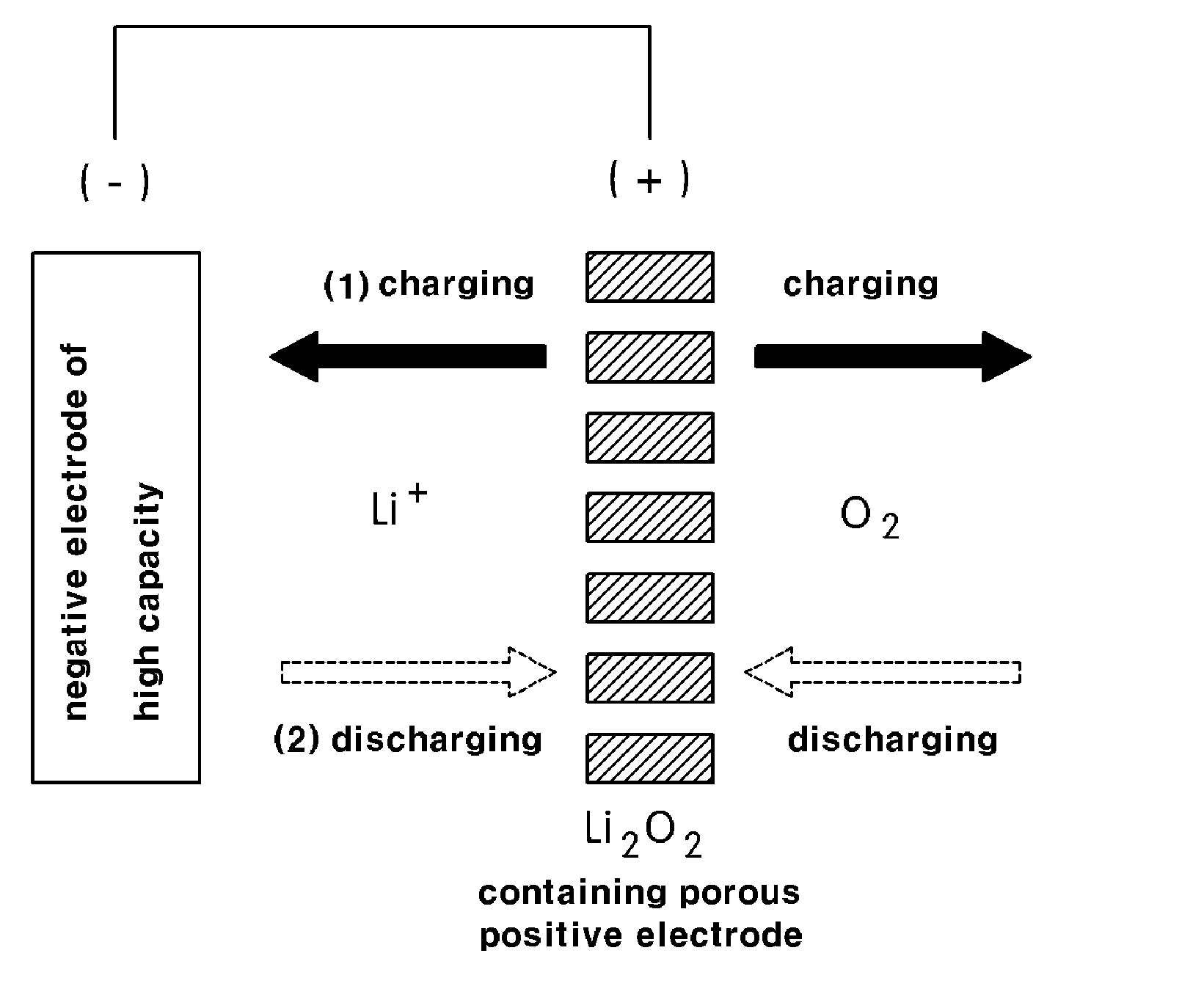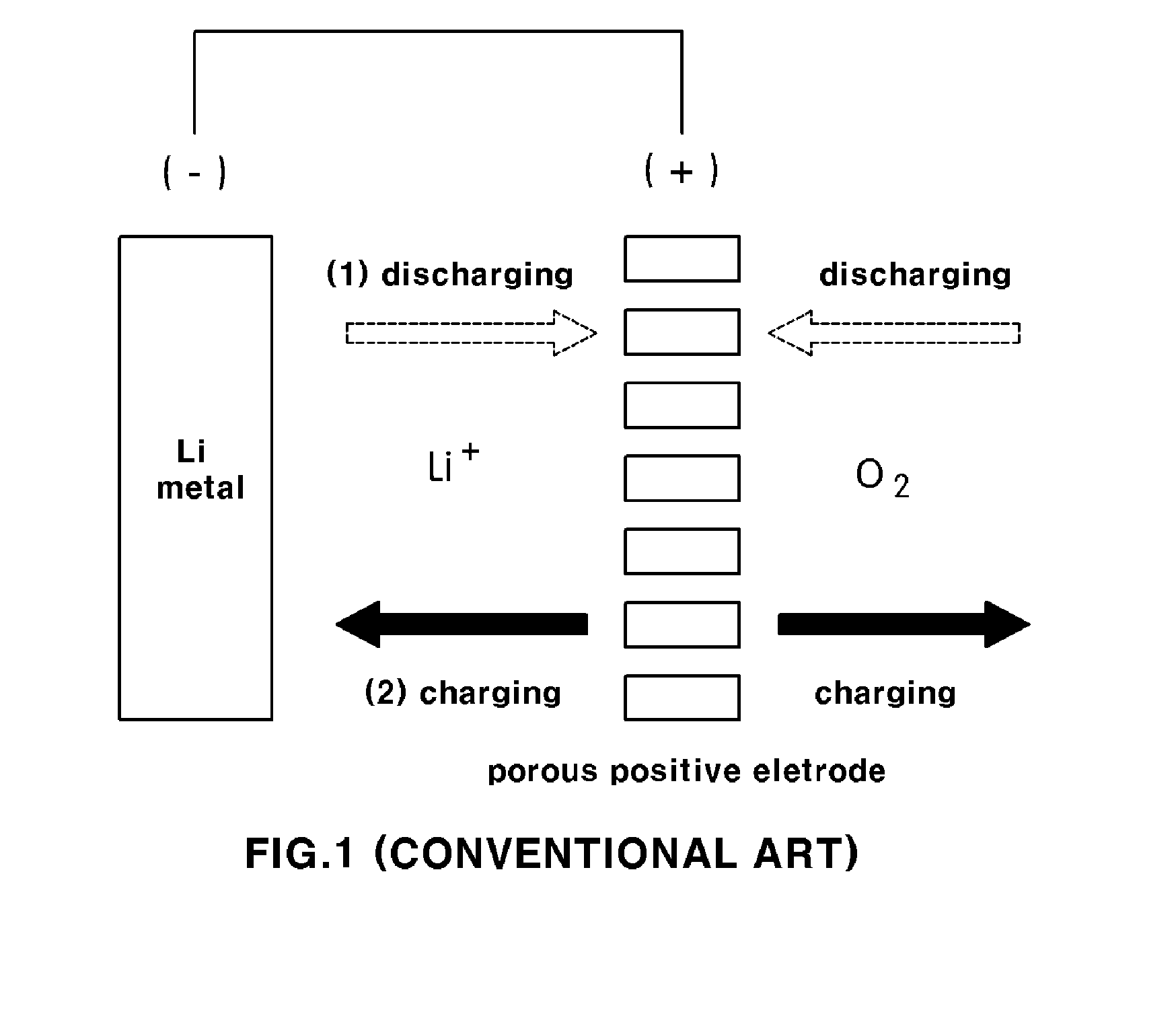Lithium secondary battery having high capacity
a secondary battery and high capacity technology, applied in the direction of non-aqueous electrolyte accumulator electrodes, cell components, electrical apparatuses, etc., can solve the problems of limited realization of high energy density, generating shorts within the battery, and lithium ion batteries according to a conventional art are not suitable for use as batteries, etc., to achieve high energy density, increase capacity, and increase capacity
- Summary
- Abstract
- Description
- Claims
- Application Information
AI Technical Summary
Benefits of technology
Problems solved by technology
Method used
Image
Examples
example 1
[0045]Silicon powder, graphite and acetylene black are mixed at a mixing ratio of 60:35:5 by weight, and then, are mixed with a solution in which polyvinylidene fluoride (PVdF) is melted into N-Methylpyrrolidone (NMP), thereby slurry is produced. Copper foil is coated with the produced slurry, and dried in an oven at about 110° C. for one hour thereby preparing a negative electrode.
[0046]Lithium peroxide (Li2O2), manganese dioxide (MnO2) and acetylene black are mixed at a mixing ratio of 40:40:20 by weight, and then, are mixed with a solution in which polyvinylidene fluoride (PVdF) is melted into N-Methylpyrrolidone (NMP), thereby preparing a slurry. Nickel foam having a thickness of 1.6 mm is coated with the prepared slurry, and dried in an oven at 110° C. for three hours thereby preparing a positive electrode.
[0047]The electrolyte is made of a solution in which lithium hexafluorophosphate (LiPF6) is melted in a concentration of 1M into propylene carbonate (PC). GF / C glass filter, ...
example 2
[0048]The lithium air battery is prepared in the same manner as example 1 except that a negative electrode is prepared by mixing silicon powder, graphite and acetylene black at a mixing ratio of 70:25:5 by weight.
example 3
[0049]The lithium air battery is prepared in the same manner as example 1 except that a negative electrode is prepared by mixing silicon powder, graphite and acetylene black at a mixing ratio of 80:15:5 by weight.
PUM
 Login to View More
Login to View More Abstract
Description
Claims
Application Information
 Login to View More
Login to View More - R&D
- Intellectual Property
- Life Sciences
- Materials
- Tech Scout
- Unparalleled Data Quality
- Higher Quality Content
- 60% Fewer Hallucinations
Browse by: Latest US Patents, China's latest patents, Technical Efficacy Thesaurus, Application Domain, Technology Topic, Popular Technical Reports.
© 2025 PatSnap. All rights reserved.Legal|Privacy policy|Modern Slavery Act Transparency Statement|Sitemap|About US| Contact US: help@patsnap.com



